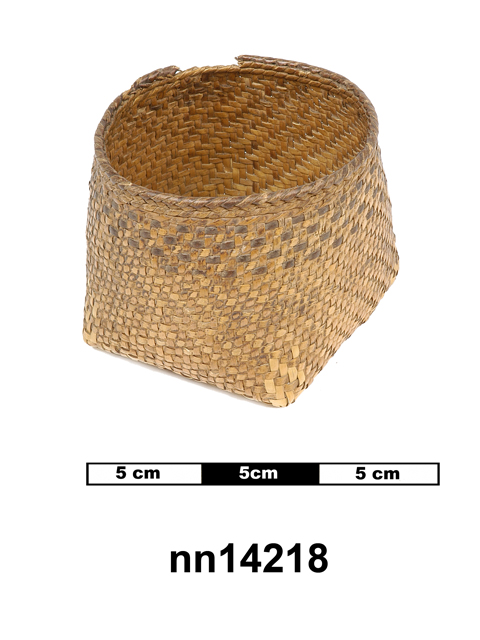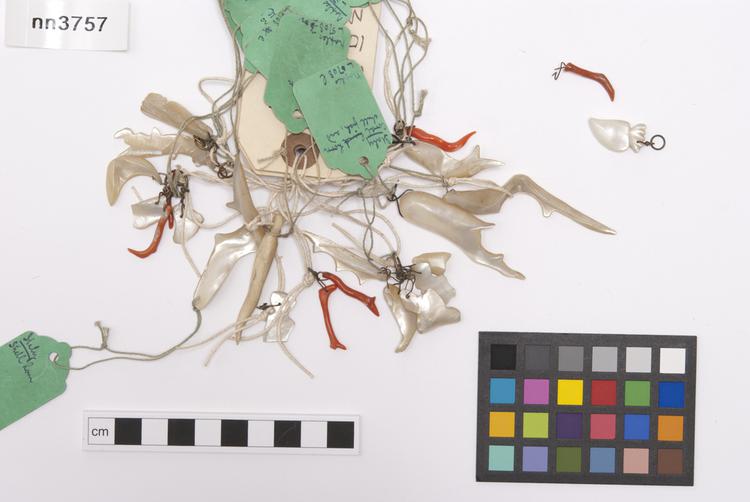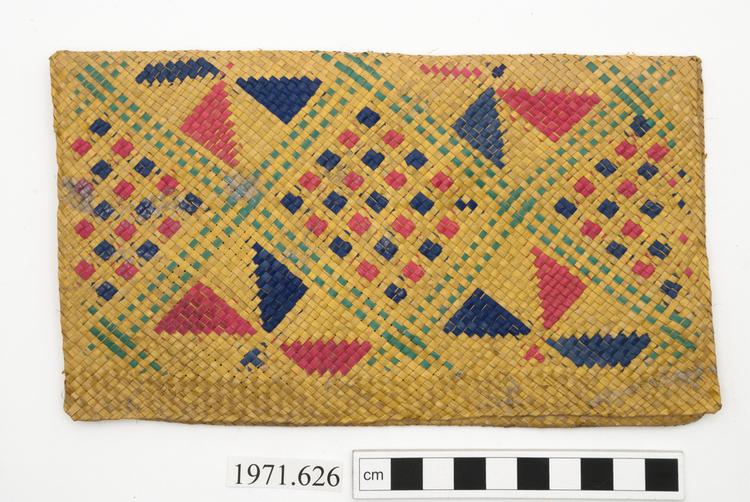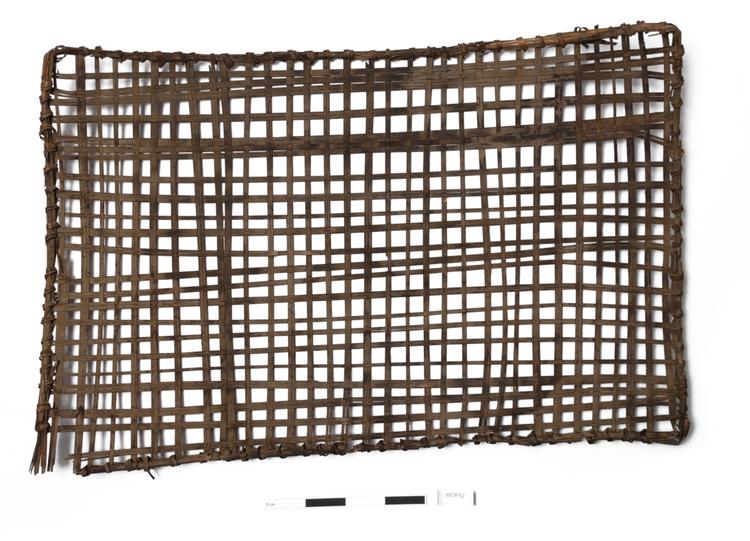


Dancing paddle, double-bladed; both sides of one blade show stylised human face suggested by double 'U' motif representing eyebrows with 2 dots in relief; the earlobes are strongly emphasised to indicate the chiefly associations of the rapa; the lower 'blade' is plain with a short tapering phallic projection. Acquired as one of a pair with 1970.241, although the two are of quite different sizes.
Dance Paddle, Rapa, Easter Island, Eastern Polynesia These paddle-like objects (rapa) were held by Rapa Nui dancers in pairs and twirled slowly in a number of different dance forms. They were used by men, women and children, although these three groups generally danced separately, in quite distinct dance forms. Rapa dance paddles from Easter Island are rare and beautiful artworks that show off one of the great strengths of Polynesian art as a whole: the abstraction of a form that once represented something until it becomes something strange, beautiful, unique and striking. Some historical accounts suggest that the phallic finials at their base mean that the rapa paddles are depictions of male dancers. Others, however, have suggested that they instead represent a unique form of genital modification undertaken by some Rapa Nui women at the time they were manufactured. This was a valuable object, being carved from the fine toromiro wood (Sophora toromiro) that was always in short supply. This use of precious materials is also paralleled by the little wooden balls carved at the base of the paddle’s ‘ears’, which refer to the practice of distending the ears by using heavy ear ornaments that the chiefly class of Rapa Nui (Easter Island) undertook. Both in its hidden symbolism, and its materials, the rapa dance paddle was a precious and chiefly object. Wood. Early 19th Century. Formerly in the private collection of Mrs A. H. Fowler-Dixon.






